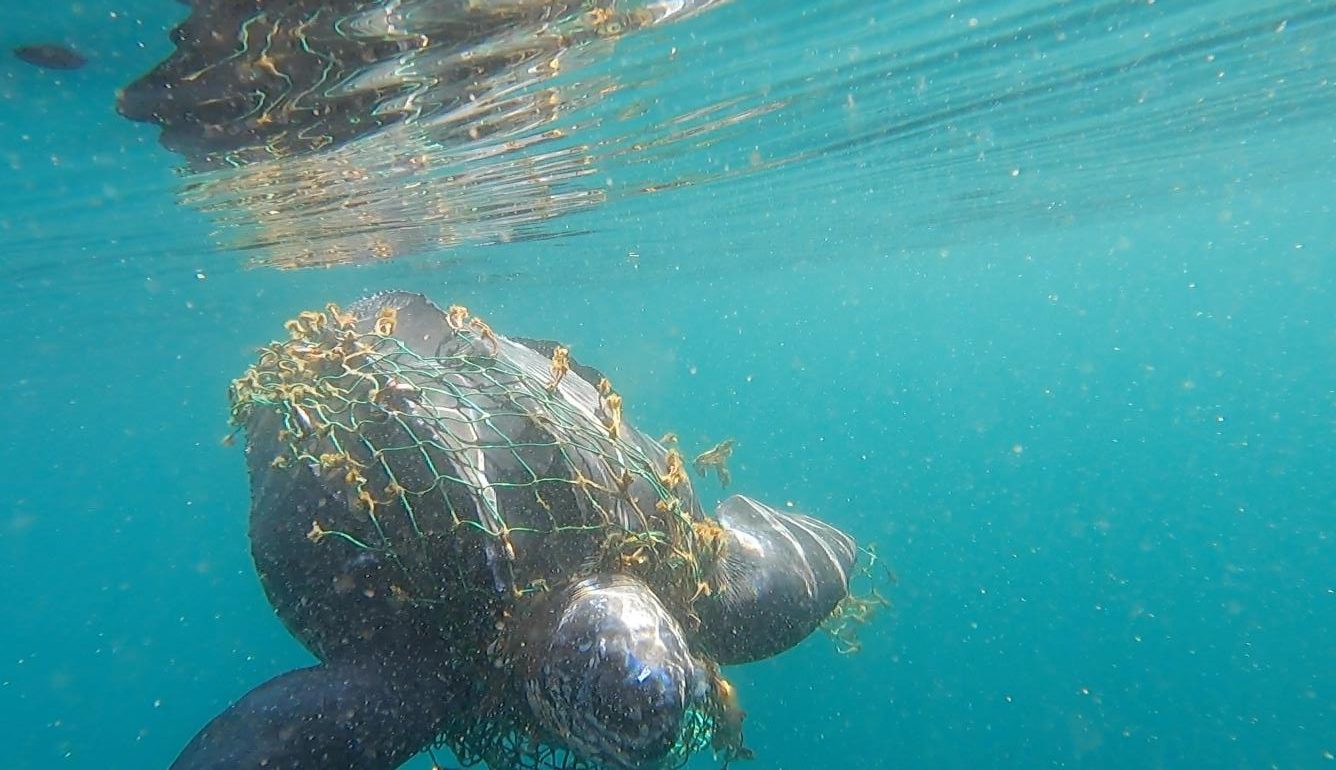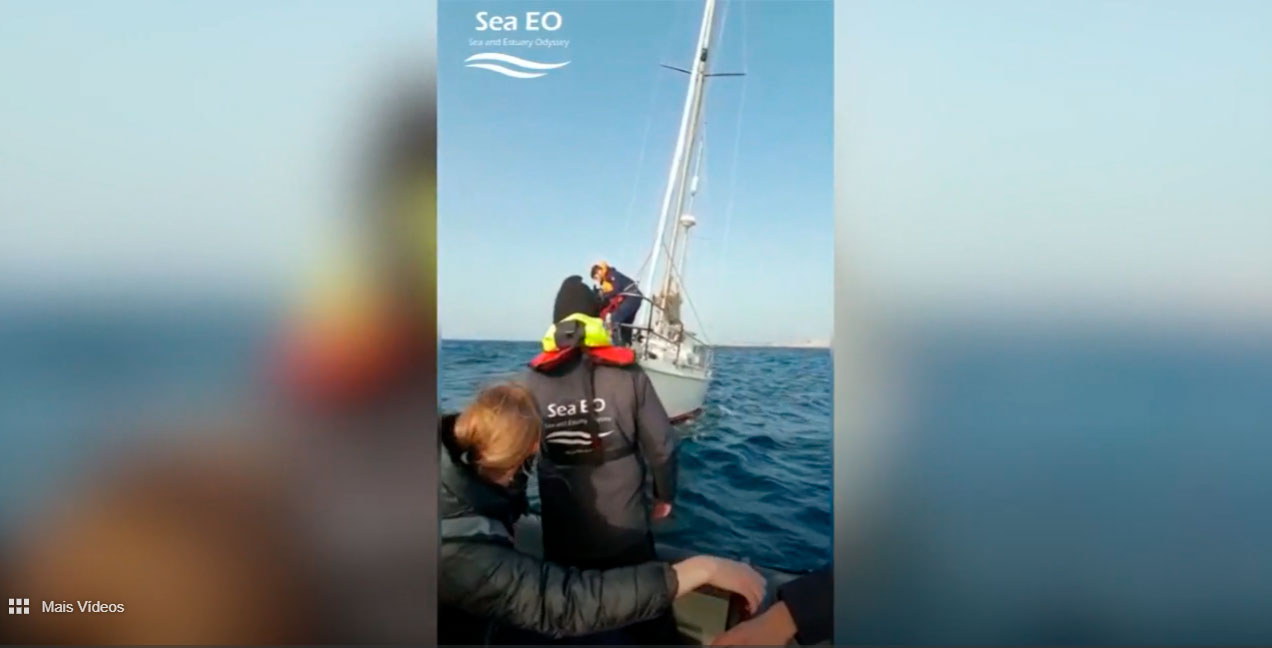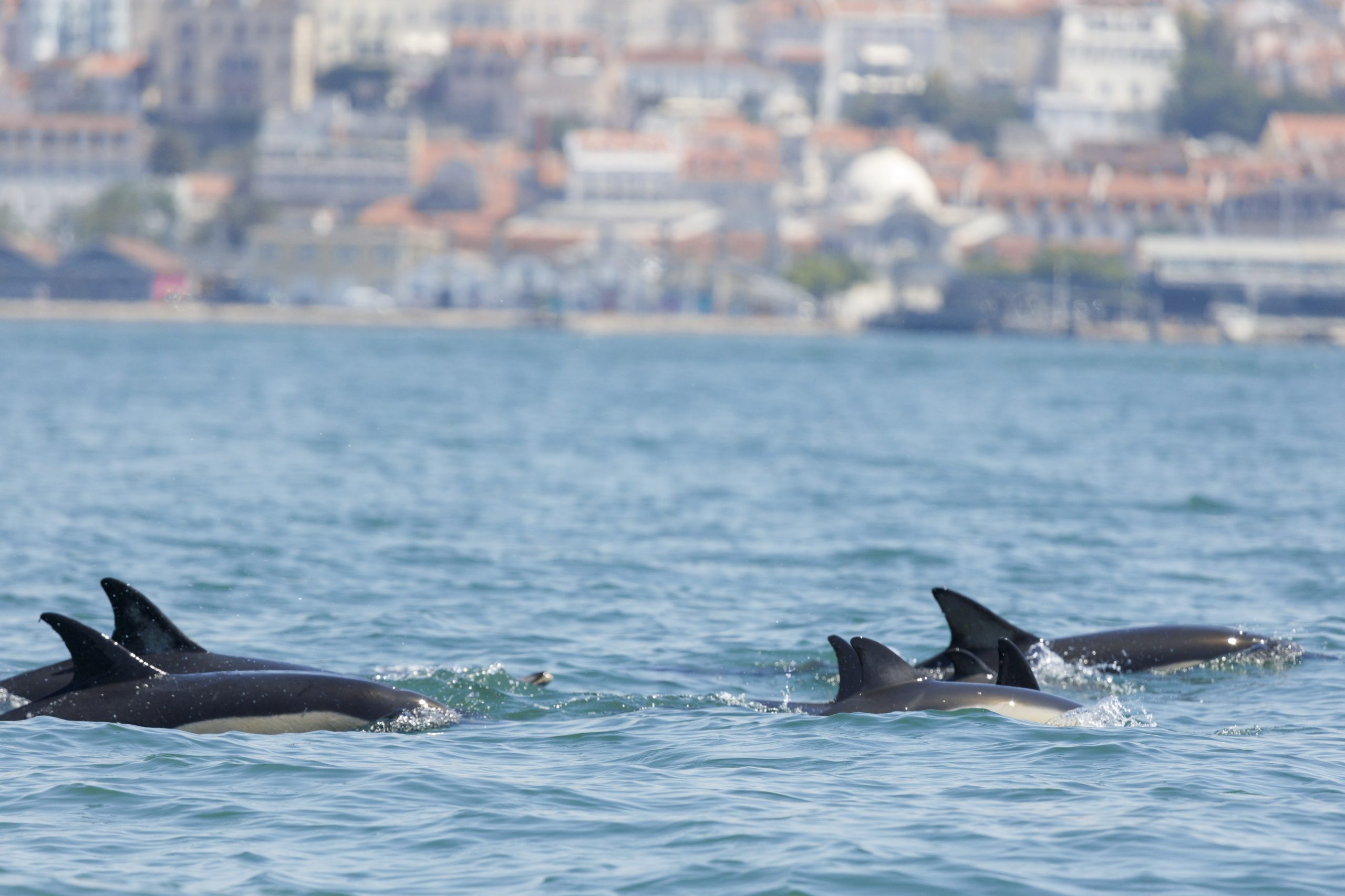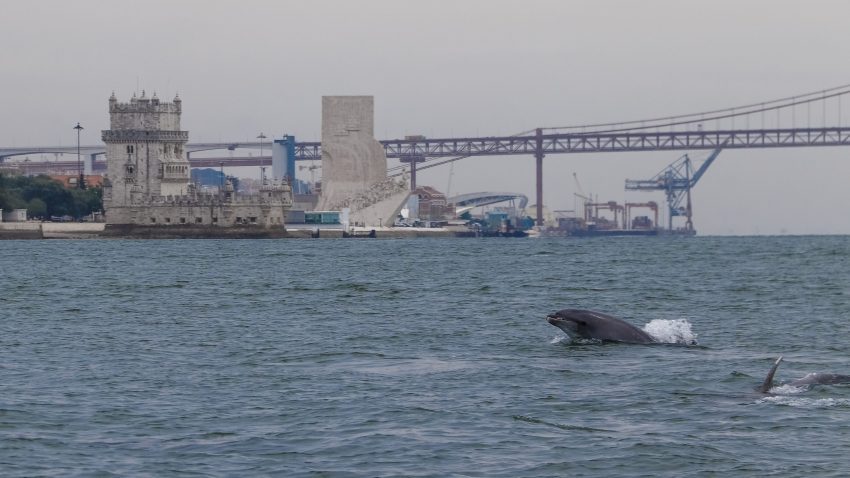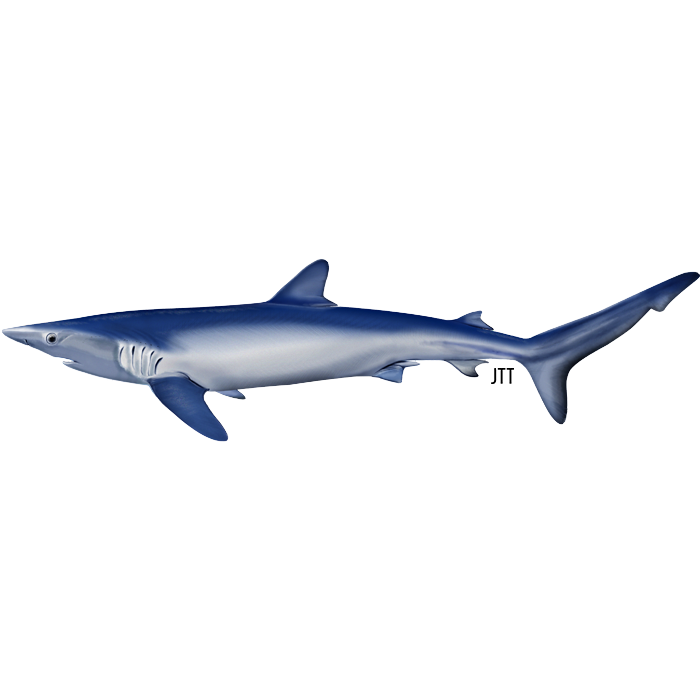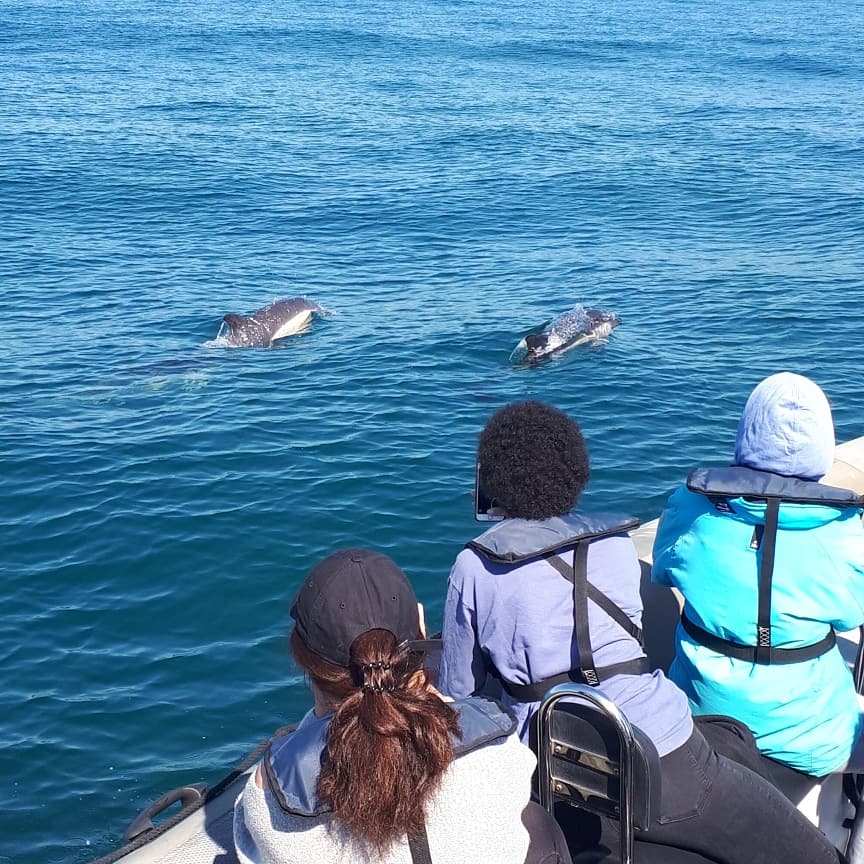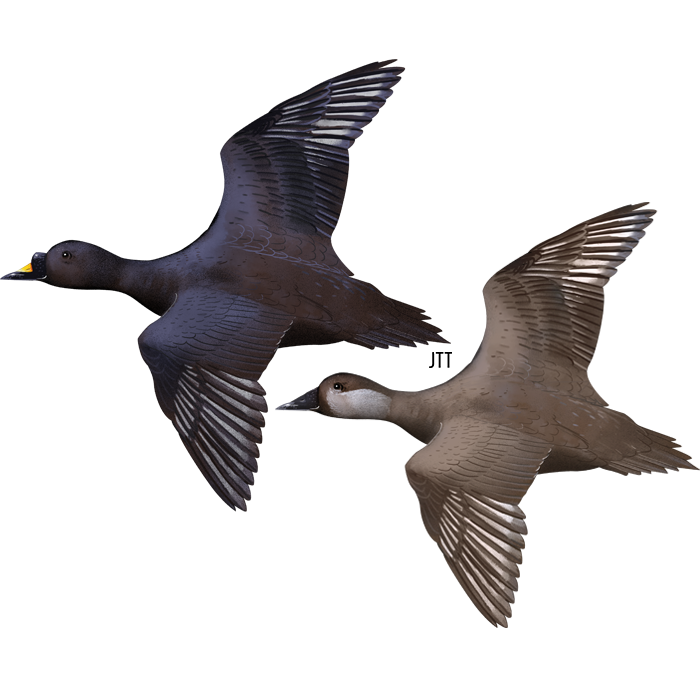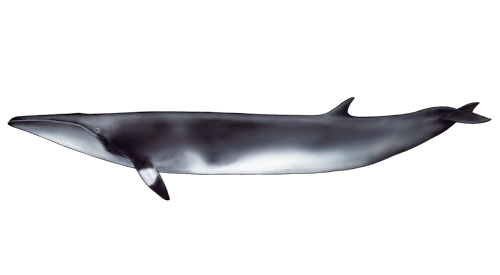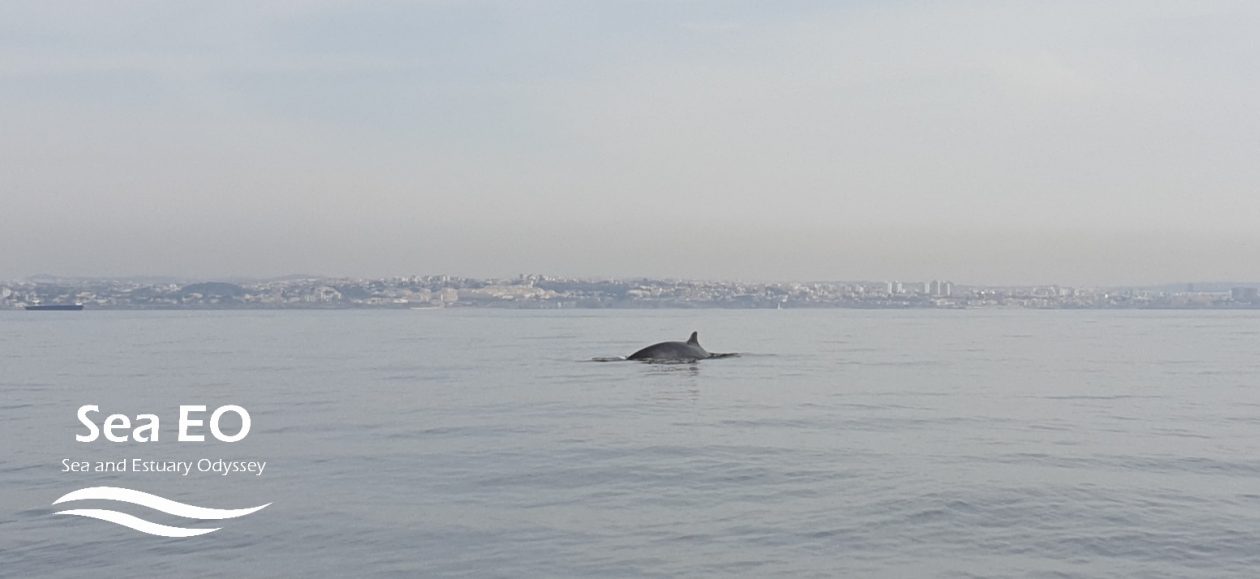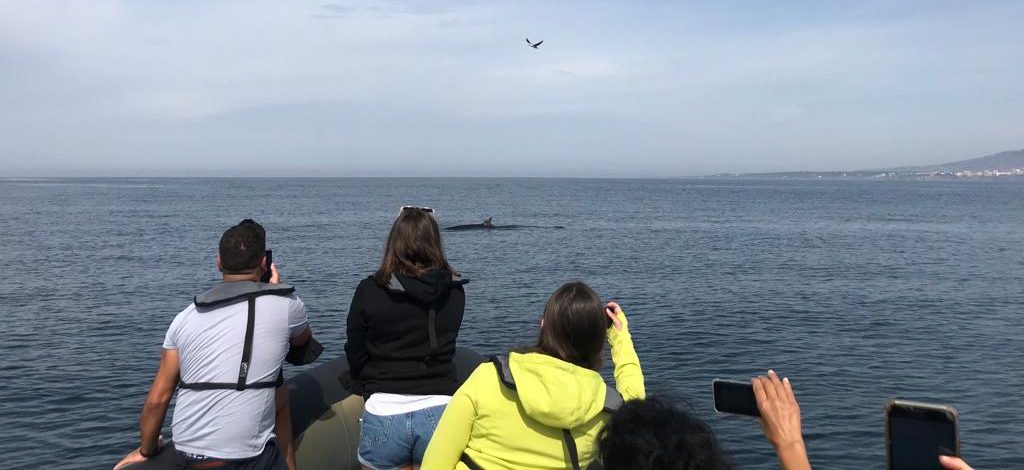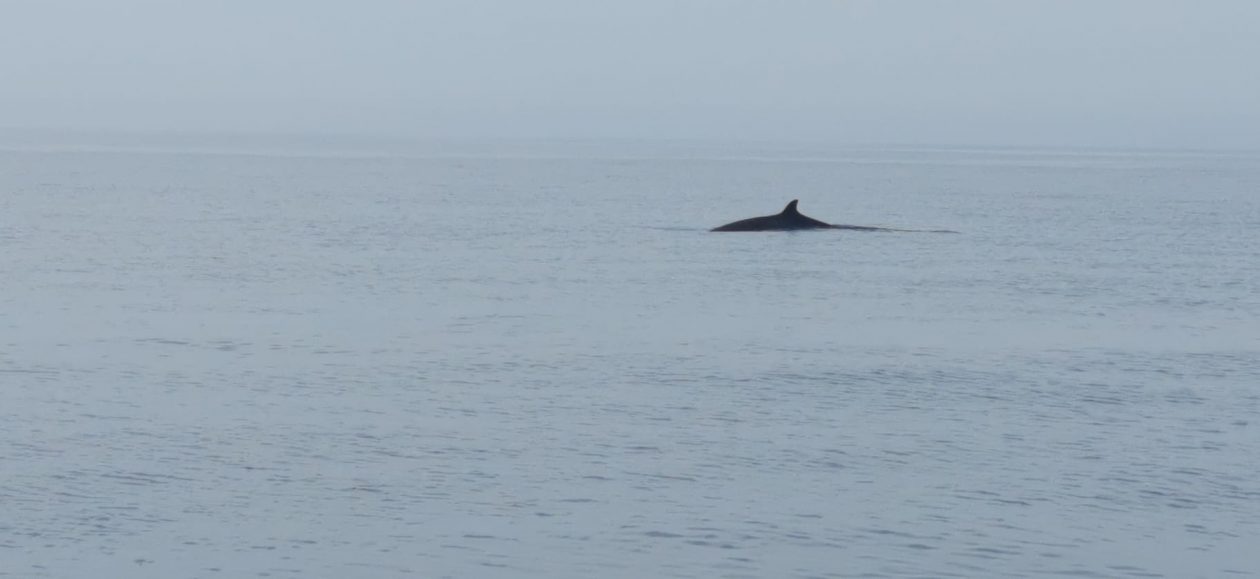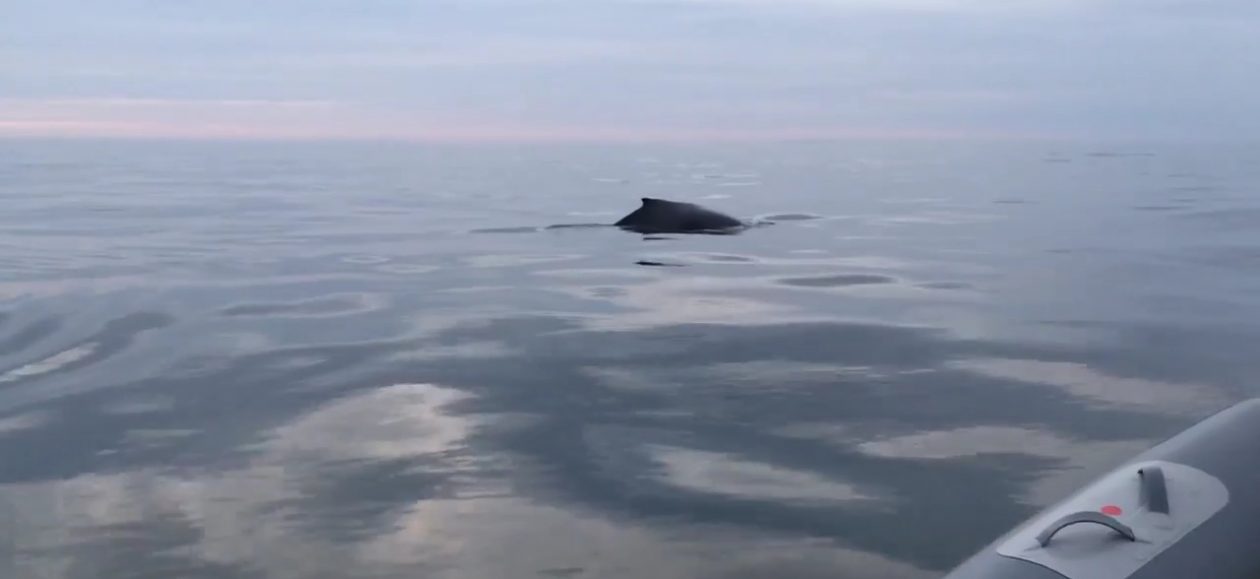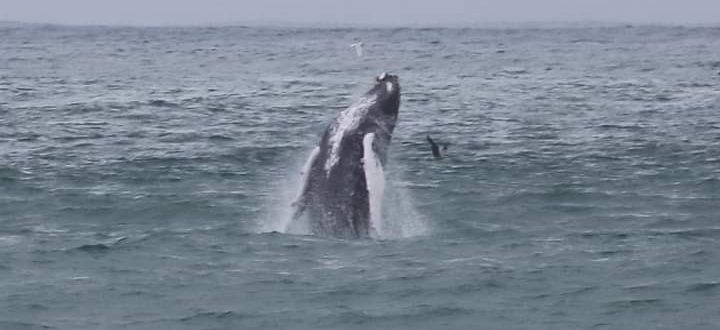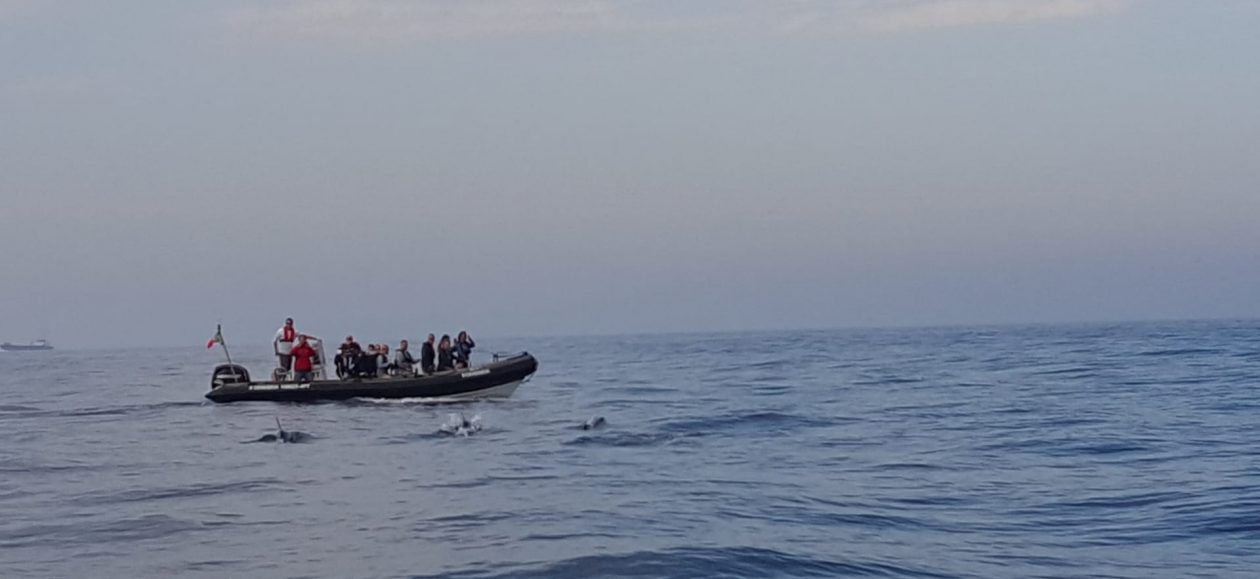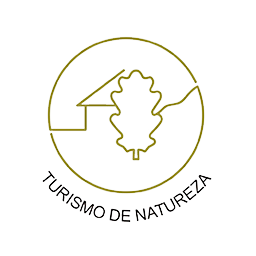Threatened Seaturtles
Of the 7 Sea Turtles, the Leatherback Turtle (Dermochelys coreacea) is the largest specie of sea turtle that exists. It can reach 3 meters in length and weigh around 500 kg and it can reach up to 305 years of age. Its color is bluish-black with light and irregular spots; in the case of females, the tail is smaller and they have a pink spot on the top of the head.
Its diet is varied and consists of jellyfish, molluscs, algae, fish and crustaceans, hence its proximity to the coast during feeding and reproduction. Although this specie exists in Portugal, it does not breed on the Portuguese coast.
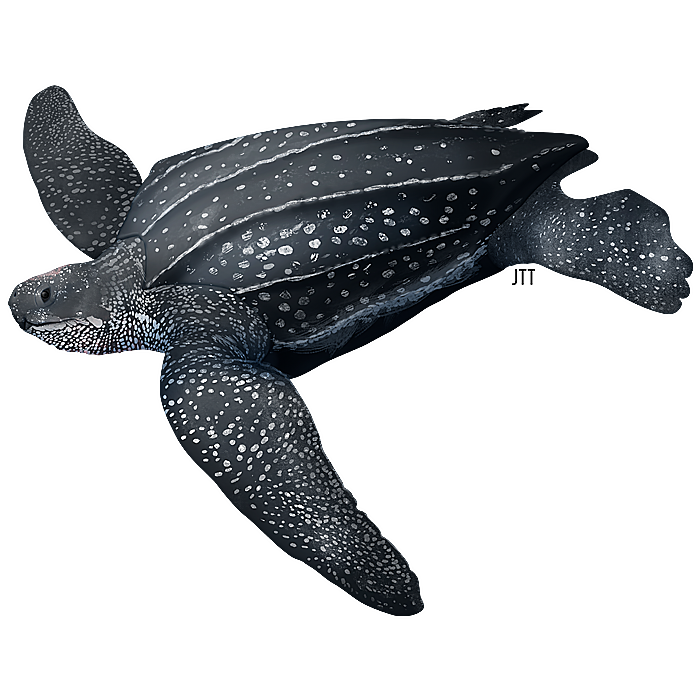
Unfortunately, the biggest threat is accidental capture in fishing gear, capturing their eggs and often ending up trapped in ghost nets that are lost at sea. On October 14th, during a Dolphin Watching tour in Lisbon, customers and crew had the opportunity to observe one of these turtles wrapped in a fishing net; despite our efforts, we were unable to approach the animal to remove the net, because fortunately it was feeding and dived as soon as we approached.
This species has a Vulnerable conservation status.
SeaEO-Tours responds to sailboat Mayday after an Orca attack
On the 21st of February, SeaEO-Tours team received a VHF communication with a MAYDAY (distress call) resulting from an orca attack, when finishing another dolphin watching tour, near Meco.
We quickly tried to understand the distance they were from us and, without hesitation, we went to their aid.
It was a 12 meter sailboat with 4 people on board. The boat was about 3 Nautical Miles West of Cape Espichel adrift because of contact with four Orcas that broke the rudder.
Arriving at the place, we verified that all crew was well and with life jackets. The Orcas had already gone their way. When we were preparing the tow, the ISN (Instituto de Socorros a Náufragos – National Maritime Authority), also arrived at the site, which took them safely to Sesimbra port.
Sidónio Paes, Managing Partner of SeaEO-Tours and marine biologist, is collaborating with the Orca Atlântica Working Group. He emphasizes that “We cannot forget that we are in the natural habitat of the Orcas. There is always a risk, but what we can do is mitigate this new behavior. We have to understand how we can defend ourselves without hurting them”.
Are Orcas attack frequent?
In recent years, there has been an increasing number of attacks by Orcas on sailboats in the Iberian Peninsula, which, in most cases, result in the rudder becoming demaged. There is no record of direct attacks on humans.
What motivates the attack?
It is not known for sure what is the origin to this interaction between Orcas and sailboats. The topic has been well followed since August 2020, when the first interaction took place, by groups of marine biologists and is the subject of studies. Although there are no final conclusions, the attacks reported so far are triggered by females and juveniles, quite well studied by the biologist communities of the Iberian Peninsula.
Portuguese news on the subject:
TVI: Group of orcas destroy sailboat rudder in Sesimbra. View rescue footage
CNN Portugal: Group of orcas destroy sailboat rudder in Sesimbra. View rescue footage
Sol: Sailboat attacked by group of orcas in Sesimbra
CMTV: Group of orcas attack sailboat with crew on board in Sesimbra
Notícias ao Minuto: Group of orcas attack and destroy sailboat rudder in Sesimbra
Nascimento de Golfinho no Tejo
Foi esta quarta-feira, 27 de julho, pelas 10:37 a bordo do “Odisseia”, num dos barcos da SeaEO Tours que os 12 clientes assistiram a um dos fenómenos mais incríveis da natureza – o nascimento de um golfinho.
As condições do rio e mar estava mais difíceis do que o habitual por estar bastante vento. Contudo, navegamos pela margem Sul e deparamo-nos com um grupo de oito golfinhos-comuns (Delphinus delphis), que é a espécie mais avistada no rio Tejo desde 2020. O grupo era composto por várias fêmeas com crias recém-nascidas, com alguns dias ou semanas, até que nos apercebemos que uma delas estava a agir de forma diferente.
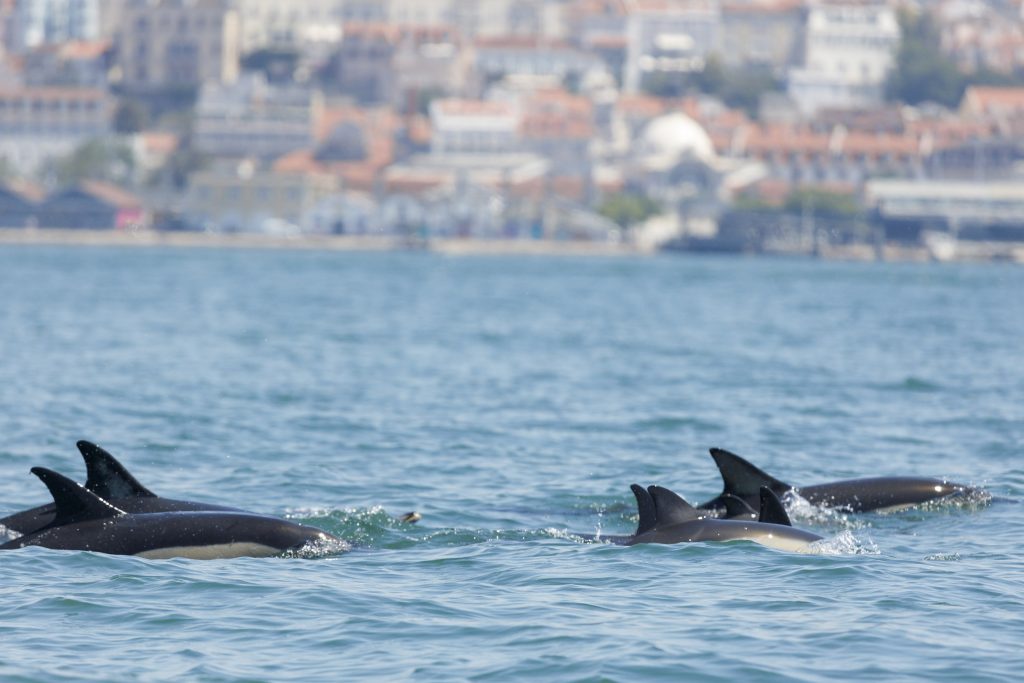
Estava muito mais tranquilo à superfície e a vir respirar com maior frequência e sem se movimentar muito. Uns segundos depois, vimos uma cria a sair debaixo da fêmea, mesmo muito pequenina com cerca de 50cm: tinha acabado de nascer. “Um dos comportamentos da progenitora é empurrar a cria para a superfície para que ela respire pela primeira vez e foi isso que me chamou a atenção na altura. Foi um momento muito especial” – como relata Bartolomeu Paes (tripulante e guia da SeaEO Tours).
Foi-nos possível confirmar porque, para nosso espanto viu-se uma bolsa cor de laranja agarrada à fêmea. Inicialmente pensamos que poderia estar ferida, mas rapidamente deduzimos que, por estar uma bolsa presa e com uma cria tão pequena evidenciada com as pregas fetais (marcas do nascimento) de cetáceos, só podia ser a placenta.
Sabendo que estes animais são muito sensíveis ao som causado pelos motores, desligamo-los imediatamente, tal como o outro barco ao nosso lado de outra empresa. Apesar de termos uma distância de segurança aos animais, esta fêmea curiosamente aproximou-se dos barcos calmamente, como se viesse mostrar a sua cria recém-nascida. Com um movimento menos habitual, as fêmea consegui livrar-se da placenta passados 10 minutos.
Com uma gestação que dura entre 11 a 12 meses, estes mamíferos que vivem no mar têm uma maior atividade sexual na altura do Verão, entre maio e setembro. Facto é que, desde que temos avistado golfinhos no Tejo em 2020, há normalmente a presença de crias ou fêmeas grávidas.
Desde a pandemia que se têm avistado golfinhos no Tejo, mas nunca o nascimento de crias, o que nos poderá colocar a hipótese: “poderá o Tejo ser uma zona interessante para ter as crias, uma zona de refúgio ou uma maternidade?”. Em parceria com o MARE-ISPA – Instituto Superior de Psicologia Aplicada (Prof. Dra. Ana Rita Luís), a empresa está a estudar o motivo de se manterem por cá, mesmo depois de todas as atividades económicas terem retomado ao normal. Alguns dos golfinhos que vieram na altura da pandemia em 2020 e 2021, continuam aqui, por isso a razão pela qual se mantêm cá será mais forte, seja por disponibilidade de alimento seja por consideraram o Tejo uma zona de maternidade.
Como mencionado noutros meios de comunicação, “Antes de 2020, tínhamos cinco ou seis avistamentos por ano”. Este recente fenómeno terá várias razões, mas está certamente relacionado com a drástica redução de atividade humana durante o confinamento, seja por menos pressão da atividade de pesca, melhor qualidade da água do rio, menor poluição sonora e menor perturbação causada por navios ou barcos de recreio.
O Estuário do Tejo é das mais importantes zonas húmidas da Península Ibérica que alberga milhões de espécies em diversos habitats, funcionando com local de eleição para espécies marinhas e aquáticas que vêm nidificar, alimentar-se, procriar ou simplesmente de passagem. É por isso mais importante que nunca a promoção da conservação da biodiversidade marinha, seja por operadores marítimo-turísticos que desenvolvem atividades de sensibilização ambiental e turismo sustentável e responsável bem como de campanhas de educação ambiental com a sociedade civil.
News about Dolphins
Check out the latest articles of which SeaEO Tours and it’s Marine Biologist have been news in the portuguese media.
The recent visits of dolphins, both common-dolphins and bottlenose-dolphins in the Tagus river have kept the media’s attentions on these magnificent marine mammals, that historically have swam up river on the old days. Reason why the 25th of April pillars have paintings of several Cetacean species.
Sharks in Portugal
Bellow, the scientific illustrator João Tiago Tavares, from Gobius created these biological illustrations for the initiative to promote the importance and beauty of Sharks in Portugal called #WeLikeSharks coordinated by APECE in 2013. Proof is that these amazing illustrations represent the biggest pelagic Sharks occuring in Portugal or spotted in portuguese waters including Madeira and Azores Arquipelagos. In total, there are more than 40 shark species swimming by, and none or very few dangerous shark-attacks. The objective was to dismistify the terror generated during decades of these lovely and pre-historical marine creatures.
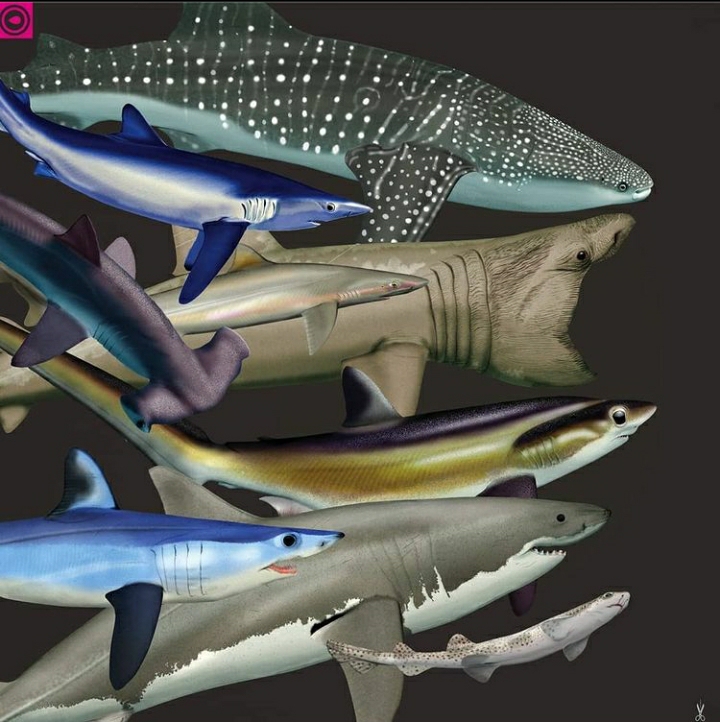
Sharks are apex predators and crucial to the functioning of marine ecosystem, yet a quarter of all shark and ray species are listed as threatened or endangered in the Red List of IUCN. They have an important roll in balancing the ecosystems by predating available prey. However, since 1970, the global abundance of Chondrichthys (sharks and rays) has declined by 71% (Pacoureau et al., 2021) urging the need to better protect them at an intenational level.
Recently, Anthias Diving Centre launched the Jornadas da Ecologia Marinha with online sessions in which expert divers or Marine Biologists shared their experiences to a broad public of up to 275 attendees per session. Both
underwater photographer Nuno Sá and the enthusiastic Dr. João Correia (FlyingSharks and APECE), shared their magnificent encounters with sharks in Portugal and elswhere.
By reading PONG-Pesca (Fisheires Enviromental NGOs), or Shark League news soon you understand the tremendus effort that APECE (Portuguese Association for the Study and Conservation of Elasmobranchs) together with the civil society and ICNF (Portuguese Environment Institute) made to convince the EU Comission for the protection of Mako shark (Isurus oxyrinchus) against overfishing. As Mako (light blue shark in the image above) and other endangered shark species were added to the Appendix II of the Convention on International Trade in Endangered Species (CITES) in 2019, Portuguese and Spanish national fisheries regulations went further by completely banning landings of this species. This decision made in late December 2020, is a stepping stone for the North Atlantic fishieres to avoid the possible and irreversible collapse of Mako shark populations. Read more scientific publication regarding world sharks state of art conservation here.
The threats over shark populations worldwide as of marine wildlife in general have mainly to do with overfishing. This activity however has to do with other sources such as the demands for shark finning, in which their fins are cut and shipped away to wolrdwide markets for shark fin soup, or used for the idealogical anti-cancer pills from cartilaginous fishes, AKA, sharks and rays. In some cases, big game recreational fishing does not release the species caught, deserving a “shame on you” sign. Despite that, pollution, ghost nets and ultimately climate change have been affecting their populations by destrioing key-ecosystems and thus diversity. In addtion, killer-whales have a special appetite for shark liver!

Sharks in Portugal and elsewhere are facing enormous threats, mainly due to overfishing, as they are essential to balance the ecosystems (Queiroz et al., 2015 and Queiroz et al., 2019), with detailed explaintions on a extensive scientific research on “Global spatial risk assessment of sharks under the footprint of fisheries”.
Furtunately, it is common on a Dolphin Watching odyssey to encounter Blue-sharks at the surface, specially when the wind is very smooth. In 2020, we spotted more than 5 blue-sharks swimming at the surface, while a colleague spotted a 3m hammer-head shark close to the Lisbon Canyon as shown above. In these boat tours, the chances are low, however with rising water temperatures during summer they occur more frequentely.
Wildlife Outdoor Activities
As COVID19 restrictions keep tight (published here) due to the huge number of severe cases in Portugal, the summer season promises to have some tourism activity as last year 2020, due to the global vaccination process. As we keep indoors, plans for outdoor activities you are preparing for next summer vacations can pass through boat tours offers.

SeaEO Tours knows you want to travel again soon, and the Portugal Tourism Bureau reenforced a travel campaign #CantSkipTomorrow in different languages. The commitment of Clean & Safe stamp will continue as high season starts, bringing trust and safeness to allow you to enjoy Portugal free of fear. As a leader in wildlife outdoor activities in Lisbon, SeaEO is also part of the Clean & Safe !
commitment.
If you wonder what to do meanwhile, check out our new Virtual Dolphin Watching tour bellow and get submerged in our virtual experiences during a Dolphin Watching boat tour and a Seabird Watching. SOUND ON!
Meanwhile, we have created partnership with Blue Sky Wildlife supported by Birdlife International organization that promotes Bird conservation and protection on a global scale together with governments, NGOs and private sector.
Seabirds Watching, Dolphin Watching Lisbon or Tagus Estuary Birding Boat Trips are our wildlife outdoor activites published in Blue Sky Wildlife platform. With detailed information about each experience and diverse wildlife species helps us reaching a broader public. Nature lovers will get the best out of the programs we prepared on small-group experiences for you, your friends and family.
While exploring the seas on a daily basis, SeaEO is part of the Ocean’s voice, thus by contrubuing for the ocean literacy and scientific knowledge, we believe the Tourim industry can cope with a more protective and sustainble approach by planning long-term objectives as prompted by our sponsors.
Travel & Hospitality Awards
SeaEO awarded Best Adventure Experience of the Year in Lisbon
As mentioned in the last year in this post, Travel & Hospitality Awards is a global recognition programme for the travel industry recognising the very best hotels, tour operators, experience providers, and innovation companies.
The awards are given based on customer satisfaction, good standing with known suppliers and customer feedback with strong focus on exceptional service. Nominees are then categorised and compared on a regional basis by a panel of judges.
The main goal is to celebrate success through the recognition of innovation, outstanding service, and excellence within the travel and hospitality industry.

SeaEO-Tours was nominated and awarded winner of the Travel and Hospitality Awards in the category Adventure Experience in Lisbon, with the boat tours we kept developing throughout this tough year 2020.
Although several other Nature Boat Tours are developed, such as Birdwacthing in the Tagus Estuary, Pelagic Birdwatching, Dolphin Watching Tour keep thier best seller ranking.
SeaEO-Tours operates in Lisbon since February 2018. We have an average of 870 guests per year, 95 % Dolphin Watching sighting success, 5 frequent Cetacean species and more than 39 aquatic and seabird species spotted.
We want to keep working with our main mission of Connecting people with Nature!
Whales off Lisbon
Increadible moments with wildlife must be shared. SeaEO customers have had the chance to presence exciting moments with marine species, such as Dolphins, Sharks, Seabirds and occasionally Whales off Lisbon.
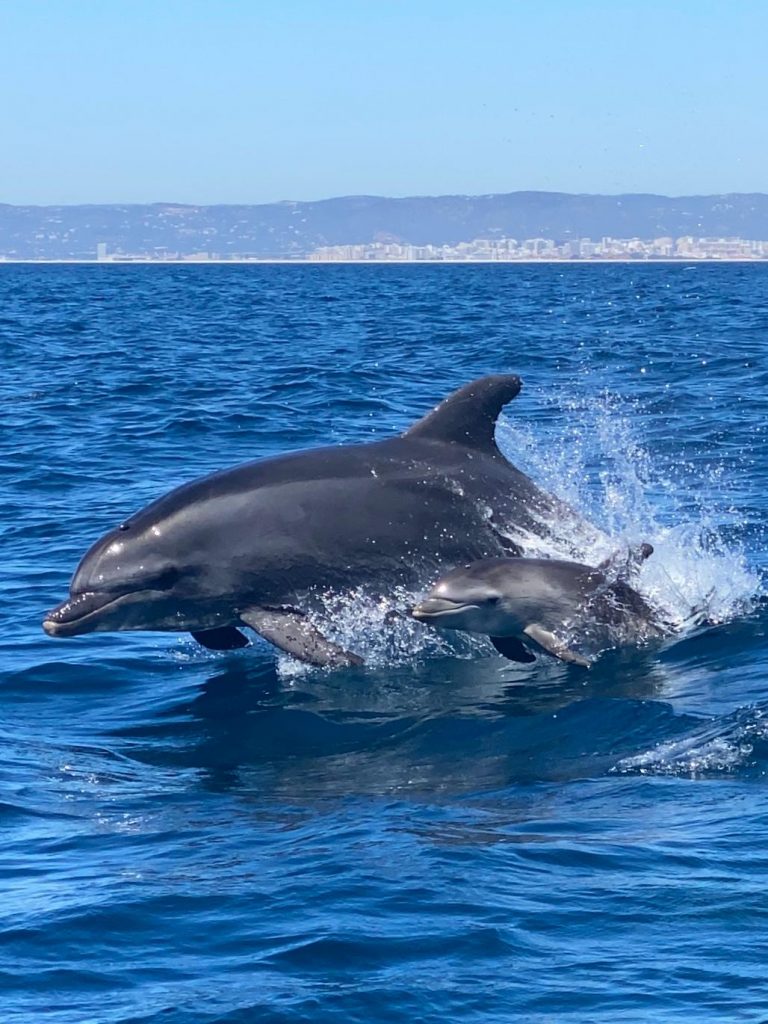
These last couple of days, a Humpback whale was also spotted nearby, swimming and jumping with all its glory. Being close enough to witness these incredible and majestic creatures makes us feel more alive. Check out our whale watching tour in september.
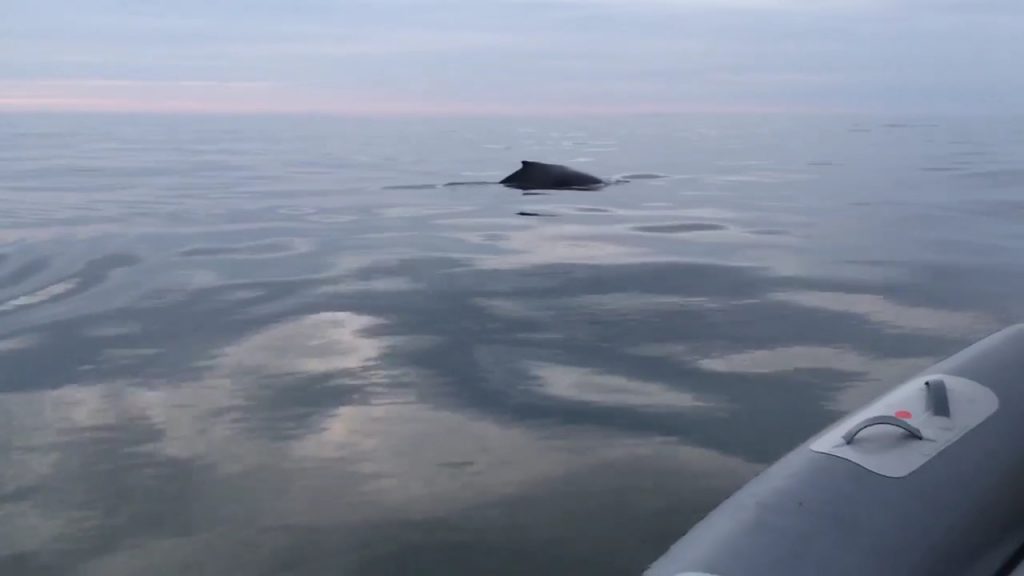
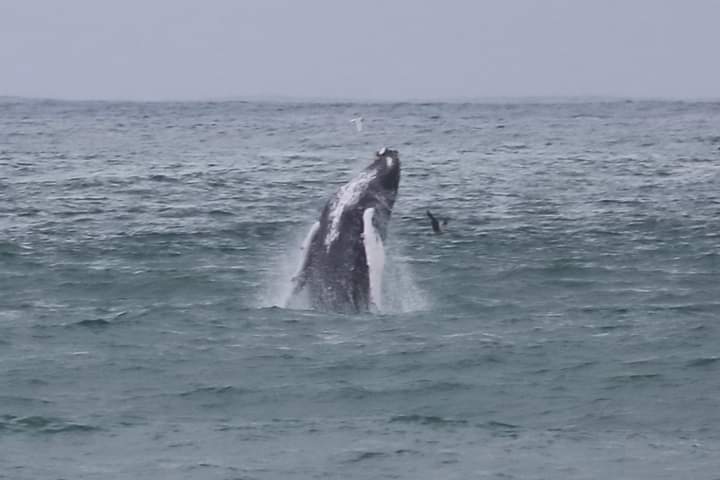
Harbor porpoises, not a real dolphin, have also been around although they are normally very shy when in presence of boats. As posted before, we have witnessed wildlife closer to our coastline.
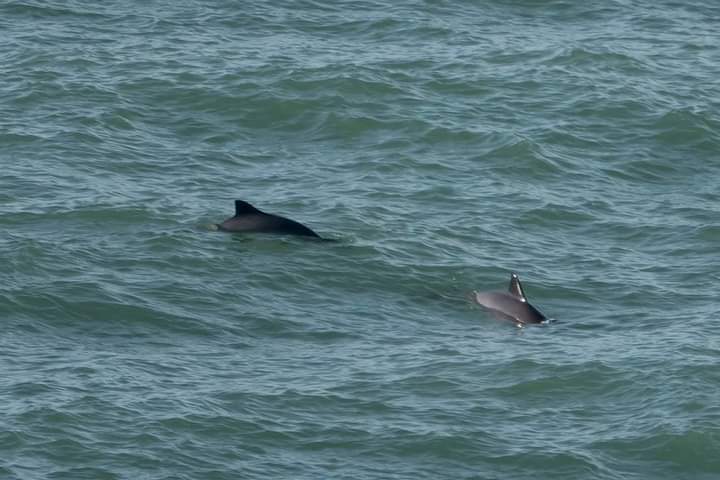
Check out all our Boat Tours in Lisbon with Nature Tourism concept. Embrace Ecotourism adventures with expert crew and benefit from 20% off for booking done until the end of 2020.

Pelagic Birdwatching
Seabirds season
The season for great bird migrations has started in September, when a variety of seabirds start flying down from the Northern hemisphere to lower latitudes, such as Lisbon. Other seabird species end their “summer” and start flying towards warmer destinations.
Portugal’s mainland is in the middle of two great migration routes for birds, waterbirds and seabirds. The North Atlantic Migration Route and the Mediterranean Migration Route. Some bird species simply pass by, while others stay for the winter. Pelagic birdwatching is one of the best ways of searching specific seabird species that pass near Lisbon coastline.
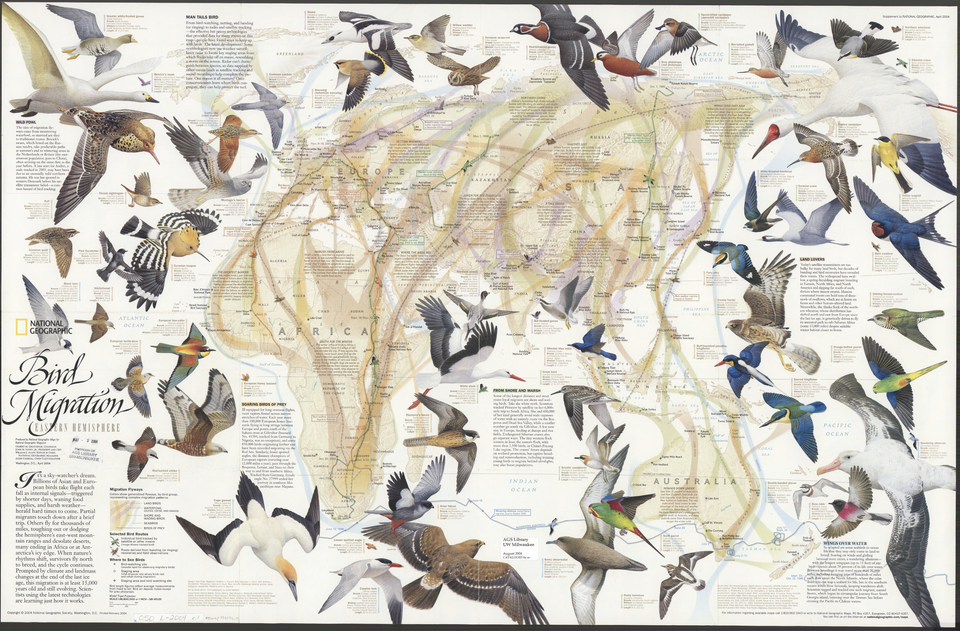
Birdwatching by boat
Besides the regular Birdwatching along the Tagus Estuary Boat Tour, SeaEO also has established partnerships with bird specialist groups, such as EVOA and Clube XZEN. This coopertation allows us to develop and create special Pelagic Birdwatching events for Ornithologist and bird lovers to get closer and take the best photograph if these lovely wild creatures.
In the Ocean, Pelagic Birds or Seabirds can be found along with cetacean species, such as dolphins and whales. It is very likely that on a Dolphin Watching Boat Tour in Lisbon our crew finds specific seabird species, therefore we know Pelagic Birdwatching
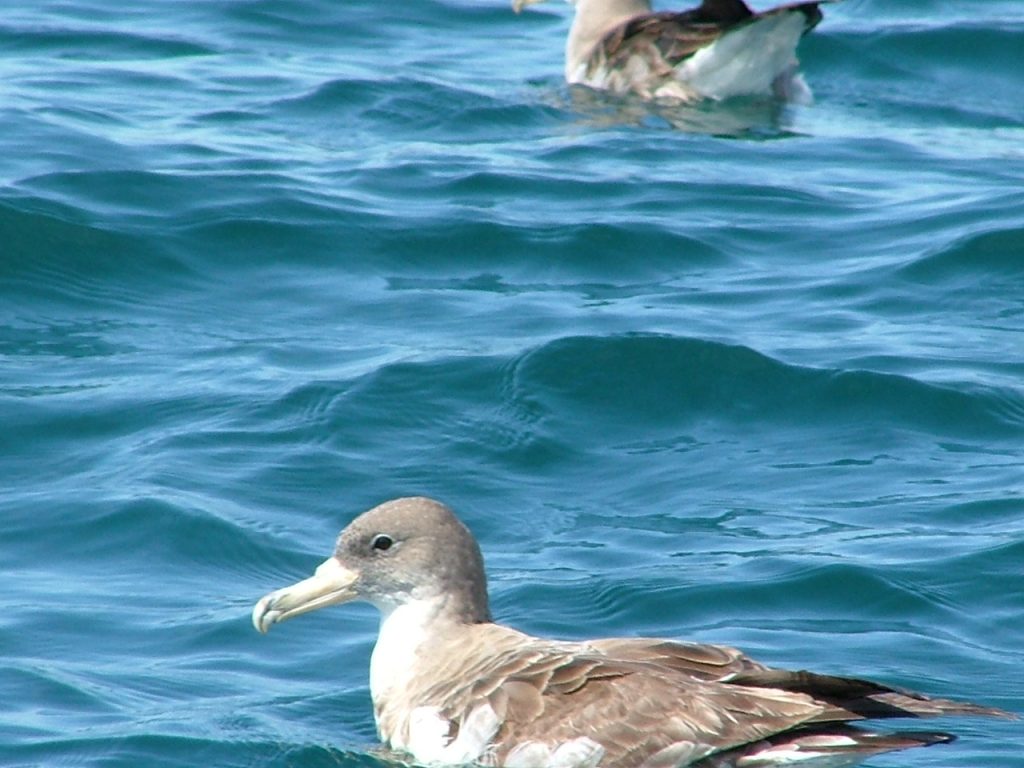
The next Pelagic Birdwatching event is programmed for October 24th early in the morning. Chum will be included on this special and places are limited to 12 guests per boat.
What to expect on a Seabird watching boat tour with SeaEO:
View calendar
Whale Watching in Lisbon
The morning started early for the crew. Sebastian and Captain Sid prepared the boat for the morning dolphin watching tour. Never had they thought it would be a whale watching in Lisbon tour.
The weather forecast seems excellent due to the lack of wind or waves. The day promises something different, don’t you think?
Captain Sid
With the customers fully checked-in and after the activity and safety briefing, the engines soon started. It hadn’t passed more than 10 minutes and a Sunfish was spotted inside the Tagus river. Swimming at the surface, it soon swam to deeper waters before everyone could take a decent photo.
As soon as the tour had just left the Tagus river in front of the Forte of Bugio lighthouse, a pod of 3 harbor porpoises were spotted in secrecy at the surface. Afraid of our presence, and because Captain Sid (the Marine Biologist) understood the behavior of these lovely Cetacean, the boat let them be alone.
A pod of friendly and playful common dolphins was spotted close by, which got the attention of all guests quite fast. As they are known, this species gets close to the boats by themselves, thus providing the best chance to get a closer look at these wonderful wild creatures so close to Lisbon.
Sebastian, an excellent first mate and great sailor man, identified a strange water movement close by. This also caught the attention of Captain Sid, who sailed closer. As soon as the boat got closer, the excitement of the crew was evident. With the confirmation the crew, our guests finally had the chance to do whale watching in Lisbon.
The whale was big, longer than the boat. A fully grown adult Minke Whale was swimming in front of the bow at a distance, which was confirmed by the Marine Biologist. This is the smallest baleen whale in the world, Balaenoptera acutorostratos which can grown up to 10 meters.
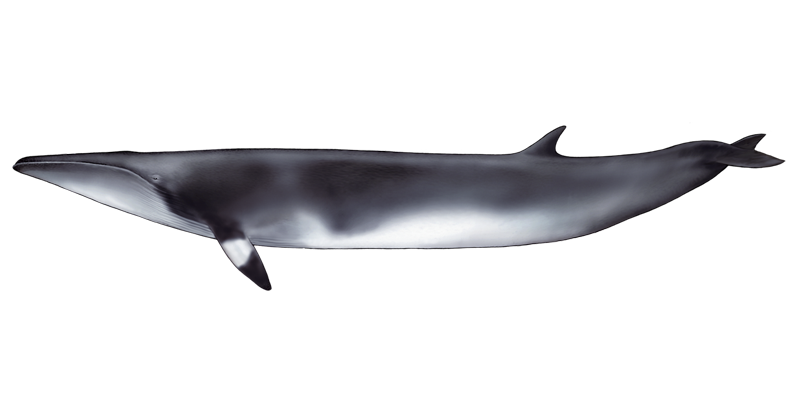
Each time the whale came up for air at the surface, the excitement was evident. A graceful marine mammal swimming freely. That tour proved this was one super encounter with marine wildlife so close to Lisbon, with the best crew. This time, we called it Whale Watching in Lisbon, which made us proud of what we do.
